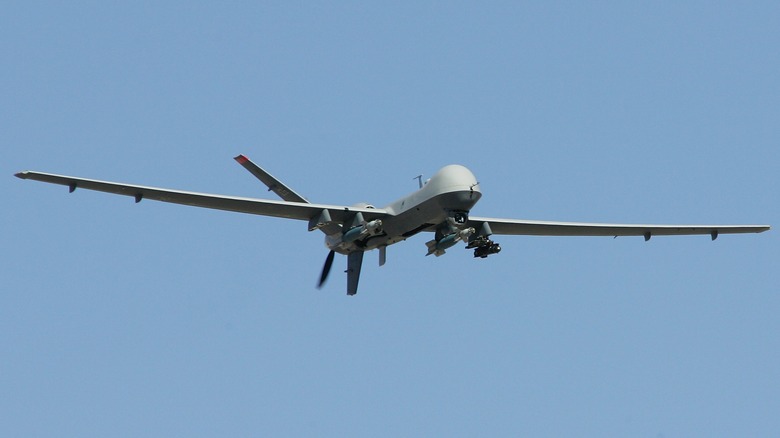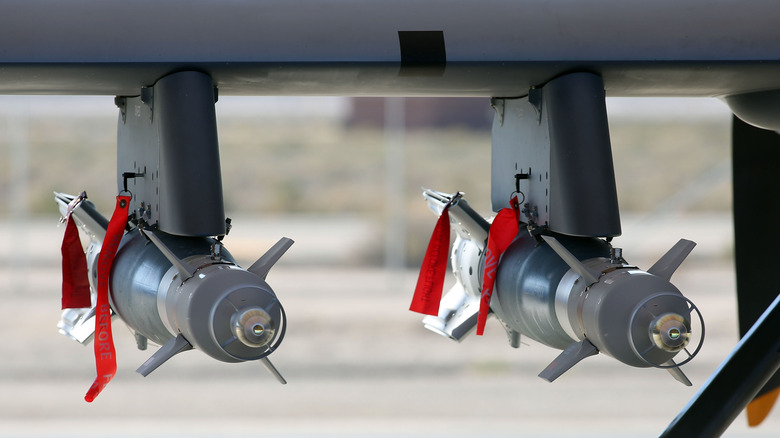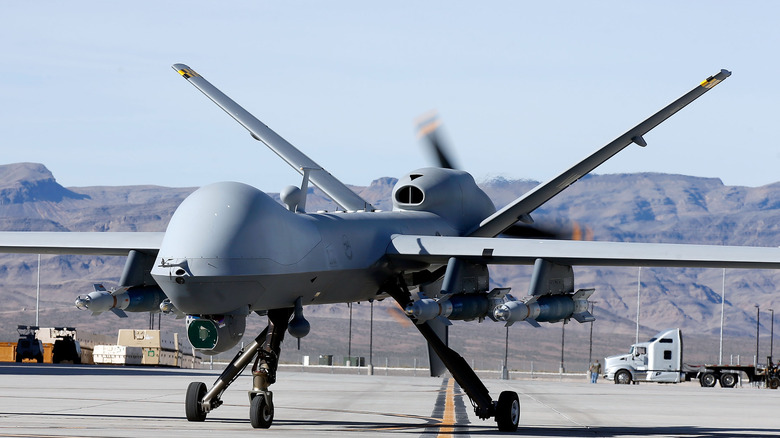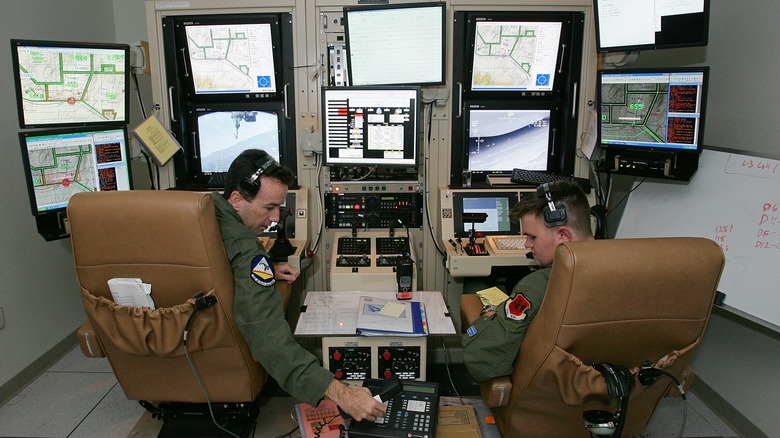'Hunter-Killer' Drones Explained: How They Work, And How It's Changed Warfare
It's an understatement to say that drones have fundamentally altered how battles are fought. From passenger-liner sized Global Hawk drones to drones used in Ukraine, unmanned vehicles allow soldiers to stay (mostly) out of harm's way. A drone allows fighters to get a literal bird's eye view of the battlefield, allowing for more accurate airstrikes, artillery bombardments, or letting soldiers just see what's over the next hill. It's become invaluable in 21st century combat and an essential arm of any modern fighting force. In 2023, if your army doesn't have drones, you likely are going to have the odds stacked against you.
In addition to allowing soldiers to get a good look around, one of the more sensational uses of drones is in an offensive role. "Hunter-Killer" drones are unmanned vehicles that are used to, like the name suggests, hunt and kill a target. But in actuality, it's a little more complex and nuanced than punching coordinates into a laptop like "Call of Duty" might have you believe.
Equipped to find a target and take it out
It's also worth noting that term "hunter-killer" refers to the specific role of the drone. And the term has many different meanings depending on the branch of service. For example, the phrase has been used by the U.S. Air Force to describe aircraft like the F-105F Thunderchief "Wild Weasel's" mission of "hunting" and "killing" surface to air missile installations during the Vietnam War.
A hunter-killer drone that can not only surveil a target but destroy it was the goal of an Air Force project in 2004, as the prior RQ-1 Predator drone system was not initially equipped with weapons. The resulting aircraft was the MQ-9 Reaper. As the name helpfully suggests, it can be equipped with a variety of armaments, ranging from laser-guided bombs to air-to-ground missiles, and even the R9X, a variant of the Hellfire missile that doesn't have an explosive warhead and is instead intended for precision strikes, hitting the target (usually a high-value human target). The ordnance has also been referred to as a "knife missile."
Don't fear the Reaper
The MQ-9 Reaper system is manufactured by General Atomics and has been in service since 2007. According to the Air Force, the MQ-9 Reaper is actually an entire system of technology and refers to four drones, its control station on the ground, and any necessary satellite links. The entire system can be disassembled and stowed away in a C-130 cargo plane. It's modular like a LEGO set, just one that costs over $76.1 million and carries missiles.
The aircraft itself not very big, fast, or particularly maneuverable. But its effectiveness comes from its high altitude capabilities of around 50,000 feet and the fact that it can stay in the air much longer than a human pilot, for missions as long as 24 hours. It's powered by a 900-horsepower turbo-propellor and sports a wingspan of 66 feet and a top speed of 240 knots (about 276 miles per hour). It's meant to stay in an area as long as its fuel suppky allows and either collect data or strike a target. Most of the time it's a combination of both.
Keeping soldiers out of harm's way
A drone's human pilots perform the duties of the mission from inside the ground control station, and, given the fact it uses satellites to communicate, the station can be anywhere in the world. This effectively eliminates the possibility of the soldiers getting hurt or killed while performing their duties. In the event a drone gets shot down, or is rendered inoperable, the Air Force can simply send up another drone with the same pilot on the ground.
Hunter killer drones allow militaries to fly deep within enemy territory and keep an eye on battlefield developments or perform a decisive strike against targets if necessary, all while remaining virtually unseen. This was especially useful in theaters like Afghanistan where combatants from the Taliban, Al-Qaeda, and eventually ISIS didn't typically possess technology capable of taking out a drone like the Reaper, or even detecting it in the first place. Drone systems like the MQ-9 Reaper won't replace fighter jets, troops on the ground, or naval fleets, but it is an upside in reconnaissance and performing necessary but dangerous strikes.



